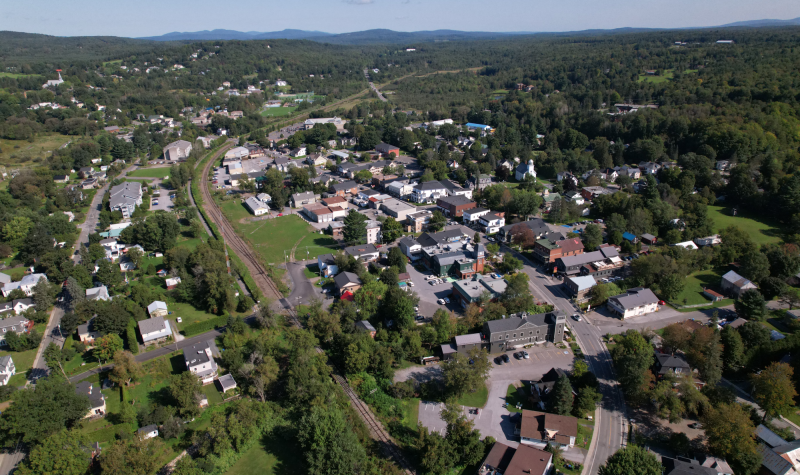The municipality of Sutton has released the results of last year's citizens survey to the public.
Between May and November 2022, the Town of Sutton organized brainstorming sessions with different target groups, public meetings, and a public interactive exhibition as a part of the Dream Sutton project “Village core: Establishing a comprehensive plan.”
The goal with the consultations was to gather the input of Sutton citizens on the issues that concern them and the types of projects they want to see happen in their community. More than 430 people participated.
Following the consultations, the municipality launched a survey for those Sutton residents that didn’t have the opportunity to take part in the consultation process to encourage more citizen participation. The survey was open to any resident over 15 years old.
The survey, which focuses on seven main themes, attracted 1,116 responses.
“We wanted to kind of put our thermometer in the water just to feel what the consensus was on certain issues, what projects didn’t have a consensus, so that we could measure a little bit the public’s opinion. It wasn’t a vote, it was to gather the state of mind of people on seven topics,” said Sutton mayor Robert Benoît.
The seven themes are Main Street, Maple Street, mobility (parking lots and walking paths), the site of the former Filtex factory, cultural infrastructures, community infrastructures, and other special projects.
“We were surprised by the large consensus on certain issues, mostly regarding Main Street. That’s important also because we are having discussions right now with the Ministry of Transportation, who is the owner of Main Street and Maple Street. They will do major work on those two streets within the next two years and we want to integrate certain elements provide in the survey,” explained Benoît.
These elements include speed reduction and more security when crossing Main Street.
“More than 70 per cent of the people agreed that the speed should be reduced from 50km/h to 30km/h between the two railway tracks because that’s the heart of the city. It’s dangerous, there’s parking, there’s lots of kids on bikes, so we want to have that.,” mentioned Benoît. “There was a large consensus on having three stops at the corner of Maple and Main Street. That’s always something that has been refused by the Ministry of Transportation, but it seems very clearly that people want to have stops at this point. (…) Another big consensus is that people would like parking to be located outside of the heart of the village so that there will be less cars.”
Benoît added that majority of citizens agreed that the site of the former Filtex factory should serve as a parking space.
“People realize that the Canadian Pacific (CP) owns a third of the land, there’s not a lot of things we can do about it. Especially if we move the parking from Main Street, it will help,” he said.
Citizens are also asking for public squares and walking paths.
“More than 70 per cent agree on the walking paths in the village, not in the mountain, but in the village. There are three or four projects that can be developed and there is a large consensus on that,” noted Benoît.
Benoît said that people were divided over having a dog park in Sutton and what to do about the John Sleeth Community and Cultural Centre building.
“It’s interesting that some people say we want to construct it, we want to demolish it, we want private companies to do it instead of the city, but also, at the same time, a lot of people said that we need to optimize our assets before doing a new construction,” he mentioned. “We knew there wasn’t going to be a consensus, but at this point in time we have the percentages of people for construction, demolition, and renovation.”
Benoît briefly highlighted how the municipality will go about addressing the divide over the John Sleeth Community and Cultural Centre.
“We cannot decide based on the survey. There was no cost evaluation of it if we demolish, if we construct a new one and all so we need to take time. The point that came out very strongly is that people are attached to John Sleeth,” he emphasized. “(…) We have to take into account that people would like to keep it so we will try to evaluate what we can do about it. (…) We’re looking, at this time, at different options for the community centre.”
When asked what the next steps are in the process, Benoît told CIDI that it’s three fold.
“The first step is to do things immediately. A lot of people said during the face-to- face meetings that ‘it’s nice to be consulted, but you have to decide eventually.’ So if there’s a large consensus let’s say on the Filtex, (…) we’re going to do the engineering study and all, finalize the negotiations with the CP rail, which we are doing right now, and we are going to have a masterplan of what we’re doing,” he explained. “The second step is negotiating with different parties, like the Ministry of Transportation. (…) The third step is we obviously need more studies, like on the community centre.”
The survey results can be found here.
Listen to the full interview below:


